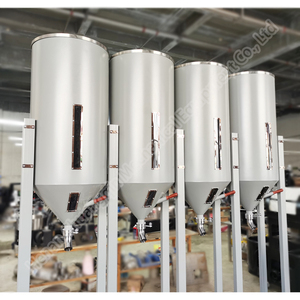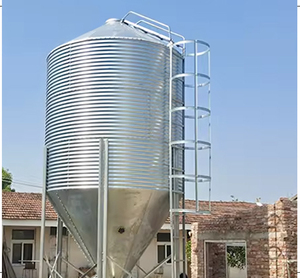Sobre silos de grãos
Explore a qualidade rígida e ótima. silos de grãos em Alibaba.com para atender a vários requisitos de estoque. A. silos de grãos é uma estrutura para abrigar materiais a granel, como grãos, carvão, cimento, negro de fumo, lascas de madeira, produtos alimentícios, serragem e assim por diante. Esses produtos são necessários principalmente para armazenar grãos de alimentos com segurança por longos períodos de tempo. silos de grãos trabalham para manter os grãos protegidos de roedores, insetos, umidade, fogo, calamidades naturais como inundações e terremotos, e guerras, bem como outras interferências externas.
silos de grãos estão disponíveis em muitas grandes capacidades de armazenamento, medindo 50 toneladas ou mais, permitindo baixos custos de operação devido à eficácia do manuseio de grandes quantidades, economizando assim os espaços necessários para fazer vários depósitos. Você também pode reduzir as necessidades de trabalho com eles. silos de grãos devido a um alto nível de mecanização e auto-habilidades. silos de grãos apresentam rápido manuseio de grãos, matérias-primas com eficiência de economia de tempo. Eles estão disponíveis em variações distintas, como silos de torre, silos de saco, silos de cimento, silos galvanizados, silos de aço.
É necessária menos área de terreno para instalar. silos de grãos, pois cobre um terço do espaço horizontalmente em relação aos armazéns tradicionais. Outra vantagem é a redução dos custos de montagem, pois. silos de grãos são projetados especificamente para esta finalidade e pesam menos do que uma instalação de armazenamento. silos de grãos pode ser equipado com controle de temperatura completo e sistema de ventilação que garante a manutenção de o grão em boas condições
Navegue pelas diferentes gamas de. silos de grãos em Alibaba.com e adquira esses produtos dentro de seu orçamento. Esses produtos são opções de armazenamento ideais para estoque tampão e aumentar a capacidade de armazenamento de alimentos. Múltiplo. Fornecedores e atacadistas de silos de grãos oferecem esses horários para negócios incríveis que você não pode perder.







































































































































































































































































 浙公网安备 33010002000092号
浙公网安备 33010002000092号 浙B2-20120091-4
浙B2-20120091-4